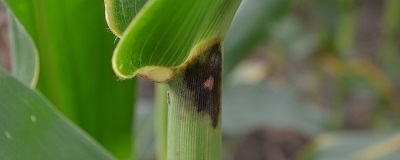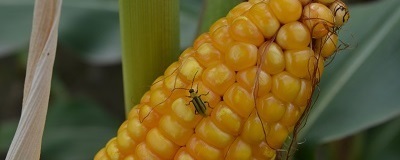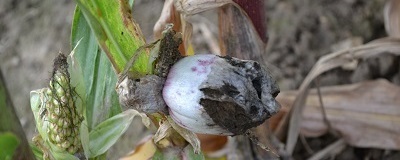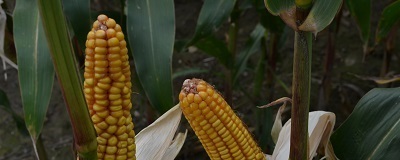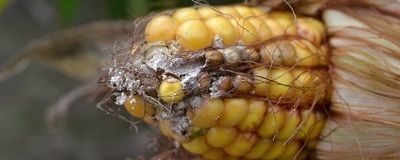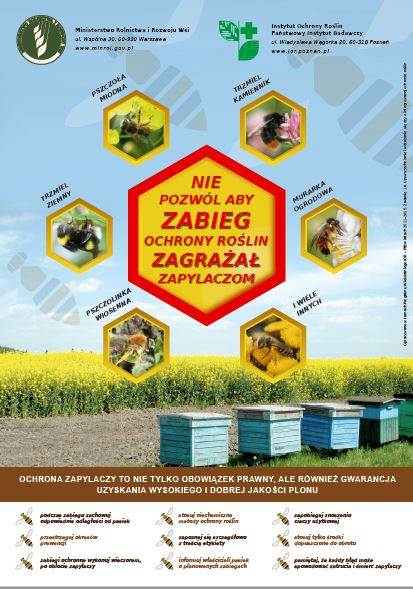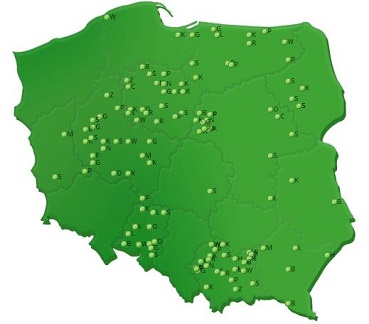Extra menu
Page menu
Navigation path
Social networks icons
Page content
Pollinator-safe plant protection
Honey bees and other pollinating insects are an integral part of ecosystems. They play a crucial role in pollinating crops and wild plants. An estimated 78% of all plant species on Earth (including more than 200 crop species) are pollinated by insects. Therefore, insect pollinators ensure the survival of most species living on our planet.
Most plants in Poland are pollinated by the honey bee (that applies to over 90% of flowers of entomophilous plants). Other flowers are pollinated by bumblebees, solitary bees, flies, butterflies, beetles and other insects.
In Poland honey bees pollinate some 50 crop species, about 60 vegetable species as well as ca. 140 horticultural plant species, including 15 species of fruit trees and shrubs, and over 60 species of medicinal plants. Insects increase crop yields and improve their quality, particularly for such plant species as rapeseed (up to 30%), apple ( up to 90%), gooseberry (up to 70%) and strawberry (up to 20%).
However, used incorrectly, the chemical plant protection products that are vital in farming may pose risks to human and animal health and harm the environment. It is therefore essential to apply plant protection products properly to either reduce or fully eliminate such risks.
To prevent poisoning honey bees:
- only perform treatments if pests populations exceed specified economic harm thresholds and, where possible, limit pesticide application to marginal zones or areas of actual pest occurrence,
- strictly observe label recommendations on plant protection products,
- where scientific evidence is available, reduce or split doses to cut the volumes of the chemicals contributed by agriculture,
- selectively use pesticides in areas visited by foraging honey bees, limiting them to products that are not toxic to bees and have short residual times,
- apply products in evenings, after bees have left your crops for the night,
- where weed species (such as chickweed) begin flowering and are visited by foraging bees in early spring, apply the same spraying principles you would for flowering crops,
- do not spray plants covered with honeydew,
- do not apply pesticides that are highly or moderately toxic to honey bees on crops that flower before the end of the residual time,
- prevent the drift of dispensed pesticide, especially onto adjacent fields with flowering crops or areas where pollinators may be foraging; do not apply treatments during excessively strong winds,
- notify beekeepers of any plant protection products you intend to apply,
- do not contaminate water bodies (such as drainage ditches, mid-field ponds, etc.) that may potentially serve as water sources for pollinators,
- abide by any other relevant laws.
Więcej szczegółowych informacji w materiałach poniżej:
Ochrona zapylaczy podczas stosowania środków ochrony roślin (materiał dla rolnika-okładka)
Ochrona zapylaczy podczas stosowania środków ochrony roślin (materiał dla rolnika-ulotka)
Ochrona zapylaczy podczas stosowania środków ochrony roślin (materiał dla doradcy)
Film traktujący o ochronie zapylaczy podczas stosowania środków ochrony roślin.
Jeśli film jest niewidoczny w Państwa przeglądarce prosimy o pobranie pliku
Rules of conduct in the event of suspected honeybee poisoning with plant protection products
Incorrect use of plant protection products frequently results in poisoning honeybees. Although it is difficult to detect such poisoning quickly and beyond doubt, its impact on the further development of bee colonies can be severe. The most reported cases of acute poisoning are those where the impact is evident with dead bees found in or near the hive.
Acting in cooperation with the Veterinary Inspectorate, the State Plant Health and Seed Inspectorate is responsible for taking official steps in cases of suspected honeybee poisoning with plant protection products. To this end, a commission may be appointed, tasked with verifying and investigating the incident. The commission may include a staff member of the Plant Health and Seed Inspectorate, a staff member of the Veterinary Inspectorate, an independent veterinarian, an apiary owner, and a representative of a beekeepers’ organization. The commission may also be appointed by a municipal authority or a city hall with jurisdiction over the location at which the poisoning occurred, or by a person who is to become a member of the commission.
The commission is responsible for immediately collecting and securing test material and sending its samples to a laboratory. In addition, members of the commission, acting within the scope of their remit, are to:
- determine the number of bee colonies suffering from the symptoms of the poisoning,
- assess the health of the affected apiaries,
- assess damage to the affected apiaries,
- check whether plant protection products have been used in a manner that poses a threat to animal health on adjacent fields on which poisoning may have occurred,
- identify the owner of the farm on which the plant protection products that are the probable cause of the bee poisoning have been applied.
Project implemented as part of tasks 1.5
Multiannual Program of the IPP-NRI for 2016-2020
Plant Protection Institute – National Research Institute
Ulica: Władysława Węgorka 20
60-318 Poznań
tel. +48 61 864 90 75
fax +48 61 864 91 20
